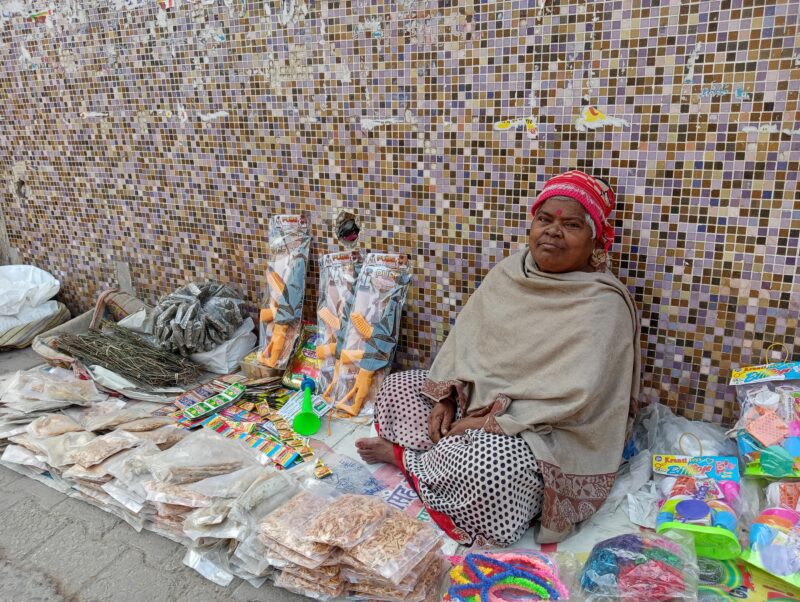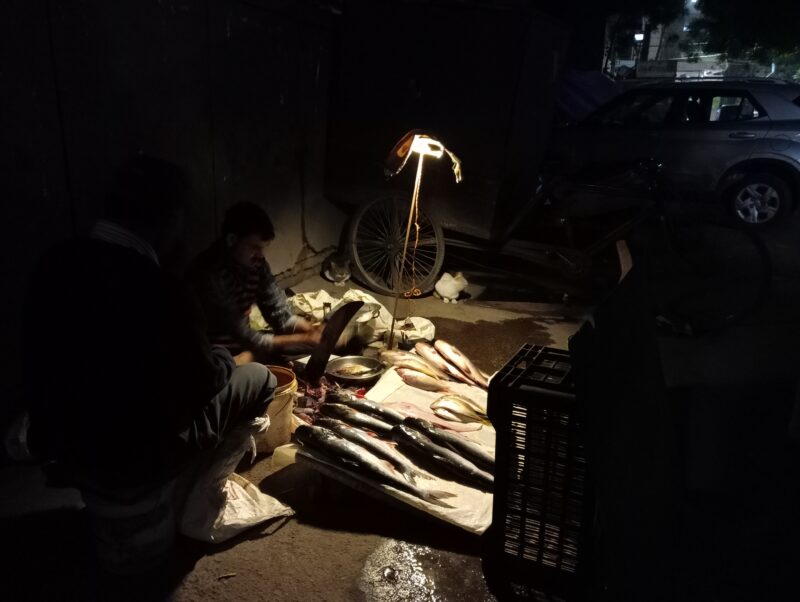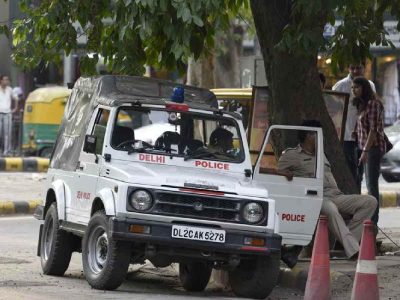Diversity in food has been a pleasant outcome of the influx of migrants and their intermingling with the local communities of Delhi. The Capital has made space for migrants and refugees of diverse cultures, ethnicities and creeds. In the process, its cuisine has evolved and gone beyond Chhole Kulche, Kebabs and the vast spread of tandoori items.
Quite surprisingly, in a city lacking clean water bodies, fish is emerging as the new favourite as steady growth in population of coastal and fish-eating communities has brought in a variety of it.
Also read: The bread spread: What migrants knead brings communities together
From the west coast
As one takes a turn towards the Nizamuddin underpass for the Sarai Kale Khan-Nizamuddin metro station, Geeta’s spread of dry fish is unnoticeable. She sits on the pavement seven days a week selling a range of dried fish that varies from shrimp to Bombil (Bombay Duck). She has been selling fish for a year at the spot.
“There is a supplier who gets me dry fish from either Maharashtra or Gujarat. Mostly it is from Gujarat, because the stock arrives faster from there,” she says.
The 60-year-old moved her business from Khan Market, where she sold fish for close to 25 years.
“Earlier, there were no takers for dry fish here (Nizamuddin), but now the demand is decent. I moved here experimentally last year because it was getting tough to travel to Khan Market with all the pandemic restrictions during that time. As the sale grew, I decided against moving back,” she explains.
Geeta, a resident of Nizamuddin West slum, had tried her luck with fish business in the Nizamuddin area earlier in view of the demand of non-vegetarian food there. But, back then, she had incurred losses.

Today, she sits with an assortment of dried fish quietly by the side of the potholed road. No drumming up to woo her customers. She gets at least two customers an hour. Besides, a few curious visitors also stop by to view the stock.
“Prices range from Rs 30 to 70 per pack depending on the size and rarity of the fish. This gets me around Rs 250-300 a day. On the best days, it goes up to Rs 500-600,” says Geeta, who sits at her spot for nearly five hours a day and lives alone. Almost all her customers are from the area.
In her collection, you can find bombil, popularly known as bombay duck, shrimp, anchovy, kolli and silver belly among others.
Confluence of cultures
Prasanna Channar gets his weekly supply of fish from a local store in Sarai Jullena, near New Friends Colony. Cooking a scrumptious fish meal for his wife and toddler is his “Sunday special”. Hailing from Kerala’s Alappuzha and a resident of Masihgarh in south-east Delhi, Prasanna has gotten his wife Meenakshi, who belongs to Lucknow, into enjoying seafood.
“Earlier she loathed the smell of it. She still hates it (the raw smell), but now she loves eating it and insists I cook it for them every week,” he says, as he beams with excitement while speaking.
They have been married for five years and have a two-year-old daughter.
“Back in Alleppey, it was initially tough for her to adapt to the food habits because fish is our staple, but see how she has learnt to even pick a bone out,” he chuckles.
The tongue sole is his favourite pick after karimeen.
“With time, Meenakshi has also learnt to buy fish,” he says, while he waits for his fresh fish to be descaled and cut up.
To cater to the demand for fish in Masihgarh, Nagen Das has set up a small fish stall, which opens only after sunset. “Even though the demand has increased manifold, there remains a stigma around the sale of fish and meat here. You are not allowed to sell fish out in the open during daytime so I have to start in the evening,” he says.
He sits with his bag of mixed fish on a tarpaulin and has the space partially covered with tin plates. Beside him, a young man sells chicken with a saree covering his counter.

A migrant from West Bengal’s Malda, Nagen gets his stock from Ghazipur Mandi, a wholesale market for fish and chicken. “I set up my shop back in December, 2020. Barring rohu and catla, the demand is mostly for the fish caught in the south Indian states. So, I pick my stock according to the demand,” he says.
Sardines and mackerals are the fast-selling ones from his stock.
Queen of East and Northeast
Across the long Indian coastlines, racks and racks of flattened fish drying in the sun on the shores is a common sight. But fish is also dear to the seven sisters of Northeast. From fresh kill to fermented, fish is found in a range of items in the cuisine of Northeastern communities. Pretty much like eastern India.
In Humayunpur, thickly populated by Northeastern migrants, dry and fermented fish is found in every other shop. With an assortment similar to that of Geeta in Nizamuddin, shops here sell a range of smoked and dry fish. However, the variety is more.
Small packages of dry fish, including bata, puti, sunfish and trout, are everywhere.
“Of course, the maximum customers are from the Northeast here followed by Bengalis. But a lot of Punjabis are also adapting to the taste. Most of our landlords and landladies are Punjabis here and we keep cooking fish all the time – mainly dried ones because it is easier to store. So, they would eat it once in a while and that is how they developed the taste,” says the owner of Machi’s, a store selling all kinds of Northeastern, mainly Manipuri culinary ingredients.
While the Punjabi community has its own fish delicacies such as Tandoori and Amritsari fish, smoked ones are still a nascent trend. They are also not regular consumers of fish.
“We all want to try new food and expand our cuisine. I guess that’s how communities mingle best,” says Vinod, a local in the area.
Meanwhile, Govindpuri fish market is a hub of Bengali cacophony where the fish-obsessed community throngs.
From Sukti Maach (dry fish) to fresh-kill, every variety is welcome. New shops are popping up regularly in the entire Kalkaji-Chittaranjan Park stretch.
Fish drying has been practised as a means of preservation since time immemorial, and dry fish is considered a delicacy in the menu of many people of coastal communities, Northeast and Bengali migrants from Bangladesh.
Around seven kilometres away, a line of shops selling fish has come up in the Batla House area. Until seven years ago, it mostly had shops selling chicken and red meat.
“Here, we have customers from Bengal and Bihar, mostly from Bengal. So, we get our stock according to their needs. But, what I have observed is whatever collection I have, is sold out, so business is good,” says Hamid, who has been selling fish in the Batla House market for the past five years.
In his stock, a sharp silver shine from Hilsa is visible, besides prawns and a range of fish like Bhetki, Parshe, Tangra, Maagur, Gurjali among others.
Follow us on:
Instagram: instagram.com/thepatriot_in/
Twitter: twitter.com/Patriot_Delhi
Facebook: facebook.com/Thepatriotnewsindia





